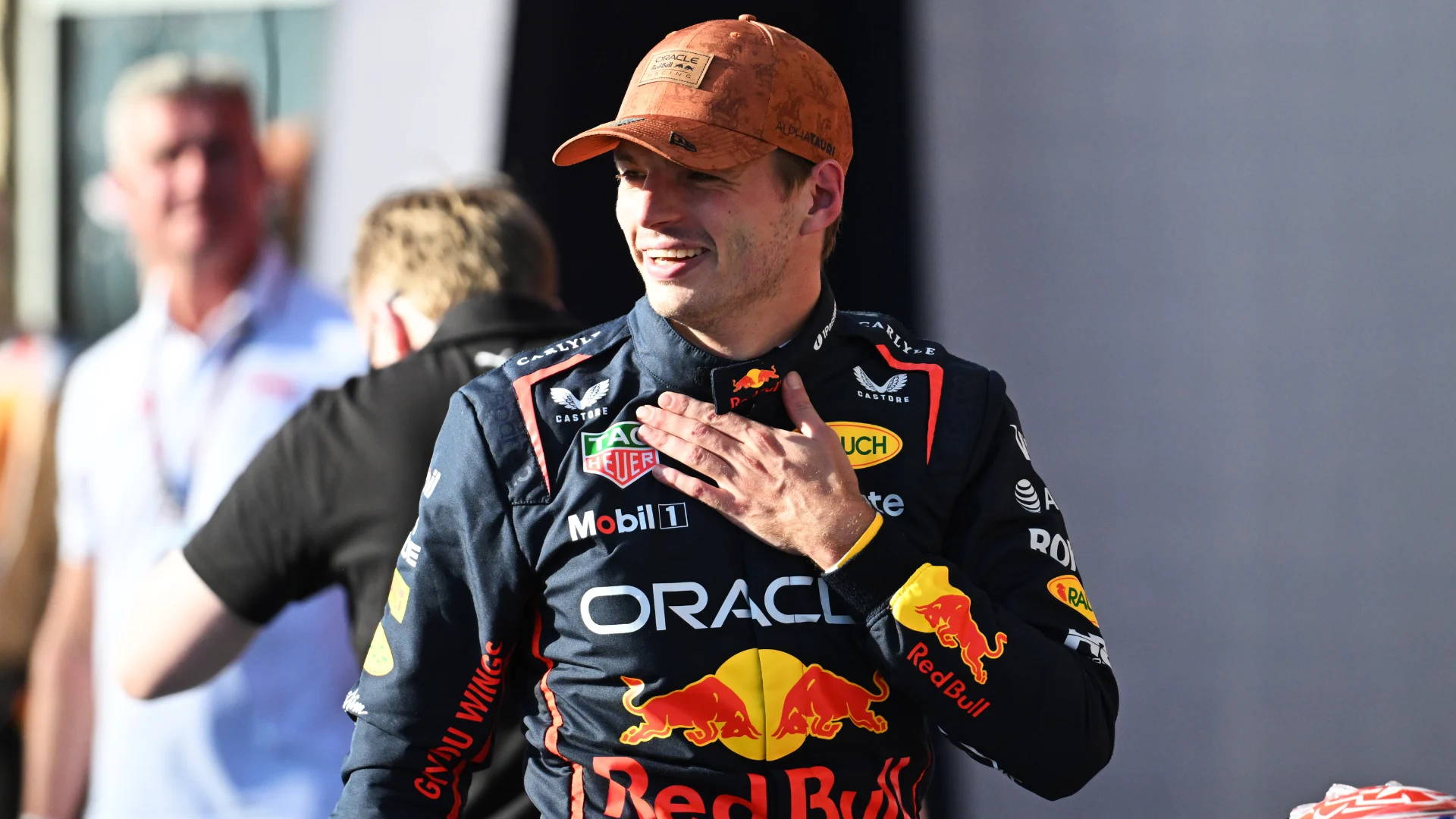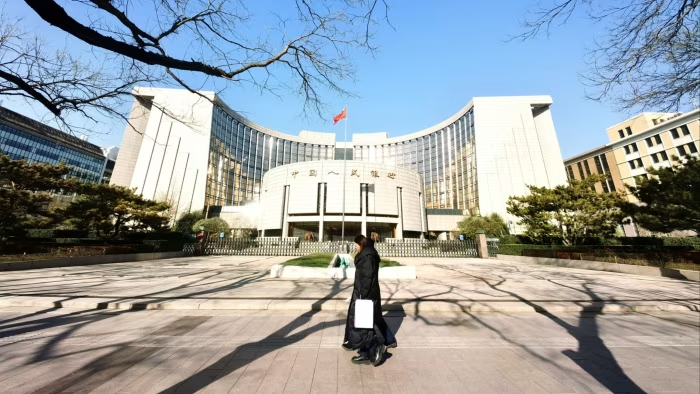Max Verstappen has seized pole position for the United States Grand Prix, the Dutchman’s initial lap in Q3 proving enough to secure him the top spot after running out of time to put in a second effort.
Having set the pace through Q1 and Q2,…

Max Verstappen has seized pole position for the United States Grand Prix, the Dutchman’s initial lap in Q3 proving enough to secure him the top spot after running out of time to put in a second effort.
Having set the pace through Q1 and Q2,…

Dyson Purifier Cool PC1 – TP11.

Samsung’s new Windfree Cassette AC.

Nikon ZR series compact camera.

FreeBSD 15.0 Beta 2 is out as the newest weekly test release of FreeBSD working its way toward a stable release in early December.
Similar to prior development builds of FreeBSD 15.0 improving their release build process, FreeBSD 15.0 Beta 2…

Charles Leclerc was surprised by Ferrari’s pace in Qualifying at the United States Grand Prix, as he and team mate Lewis Hamilton secured third and fifth places for Sunday’s race.
Ferrari had struggled for pace in Austin prior to Qualifying,…

The TROP2-targeted antibody-drug conjugate (ADC) sacituzumab tirumotecan (sac-TMT; SKB264; MK-2870) yielded superior progression-free survival (PFS) compared with chemotherapy in patients with previously treated, locally advanced or metastatic hormone receptor (HR)-positive (+), HER2-negative (–) breast cancer, according to updated findings from the phase 3 OptiTROP-Breast02 trial (NCT06081959), presented at the 2025 ESMO Congress.1
Notably, sac-TMT elicited a 65% reduction in the risk of disease progression or death vs chemotherapy (HR, 0.35; 95% CI, 0.26-0.48; P <.0001) and showed a consistent benefit across subgroups. At a median follow-up of 7.4 months, the median PFS (mPFS) in patients receiving sac-TMT (8.3 months; 95% CI, 7.0-8.6) was approximately twice that of patients receiving chemotherapy (4.1 months; 95% CI, 3.0-4.3).
Additionally, an interim analysis of overall survival (OS) revealed a positive trend among those receiving sac-TMT compared to those receiving chemotherapy (HR, 0.33; 95% CI, 0.18-0.61).
“The current chemotherapy options [for HR+/HER2– breast cancer] show limited efficacy,” said Man Li, professor at the Second Affiliated Hospital of Dalian Medical University, during the presentation.1 “Sac-TMT has shown promising activity in pretreated patients with HR+/HER2– metastatic breast cancer in [a] phase 2 study [NCT04152499].”
These new statistically significant and clinically meaningful efficacy data from OptiTROP-Breast02, along with an observed manageable safety profile, strengthen the case for sac-TMT as a potential new treatment option for this patient population who comprise a vast majority of global breast cancer cases.1
“The OptiTROP-Breast02 study supports sac-TMT as a new treatment option for patients with HR+/HER2– breast cancer following endocrine-based therapy and chemotherapy,” said Li.
OptiTROP-Breast02 is a global, randomized, open-label study evaluating the efficacy and safety of sac-TMT vs investigator’s choice of chemotherapy (ICC) in adult patients with unresectable, locally advanced or metastatic HR+/HER2– breast cancer who had failed at least 1 line of systemic chemotherapy.2 The study is assessing the primary end point of PFS, along with secondary end points of investigator-assessed OS, objective response rate, disease control rate, and duration of response.
Patients were eligible for participation if they had HR+/HER2– breast cancer, had between 1 and 4 lines of chemotherapy, and had at least 1 endocrine therapy, CDK 4/6 inhibitor, and taxane in any setting. Of 399 patients randomized 1:1 to either the investigational arm (n = 200) or control arm (n = 199), 200 received 5 mg/kg of intravenous sac-TMT every 2 weeks, while 196 received ICC including eribulin, capecitabine, gemcitabine, and vinorelbine.
Patient characteristics were well balanced between the study arms. Across both arms, the median age was 54 years (range, 31-74), two-thirds had an ECOG performance status of 1, about 53% were HER2 zero, and 47% were HER2 low. About 96% of patients had visceral metastases and over three-fourths had liver metastases. About three-fourths of patients had received neoadjuvant chemotherapy and all patients had received prior taxane, endocrine therapy, and a CDK 4/6 inhibitor. About 56% of patients had received at least 2 lines of chemotherapy in the advanced/metastatic setting and a little over one-fourth of patients had primary endocrine resistance.
This most recent report of safety data revealed a manageable safety profile, with no new safety signals. In terms of treatment-related adverse events (TRAEs), the incidence of all-grade and grade ≥3 TRAEs was comparable between investigational and control arms. The most common TRAEs for both sac-TMT and chemotherapy were hematologic toxicities, including decreased white blood cell count, anemia, and neutropenia. While stomatitis was more frequent in patients receiving sac-TMT (63% vs 8%), Li noted that these events were primarily low-grade and manageable.
Treatment discontinuation occurred in 87 and 138 patients in the investigational and control arms, respectively. The most common reason for discontinuation was radiographic disease progression in both the investigational arm (n = 80) and control arm (n = 122).
Regarding next steps Li said, “Phase 3 studies of sac-TMT as a monotherapy and/or in combination with pembrolizumab (Keytruda) in patients with chemotherapy-naïve HR+/HER2– breast cancer are ongoing globally (NCT06312176) and in China (NCT07071337).”
DISCLOSURES: Li had no interests to declare pertaining to this presentation.
REFERENCES:

Passive investing in index funds can generate returns that roughly match the overall market. But in our experience, buying the right stocks can give your wealth a significant boost. For example, the Objective Corporation Limited (ASX:OCL) share price is 45% higher than it was five years ago, which is more than the market average. It’s fair to say the stock has continued its long term trend in the last year, over which it has risen 24%.
Since the long term performance has been good but there’s been a recent pullback of 4.5%, let’s check if the fundamentals match the share price.
This technology could replace computers: discover the 20 stocks are working to make quantum computing a reality.
In his essay The Superinvestors of Graham-and-Doddsville Warren Buffett described how share prices do not always rationally reflect the value of a business. One flawed but reasonable way to assess how sentiment around a company has changed is to compare the earnings per share (EPS) with the share price.
During five years of share price growth, Objective achieved compound earnings per share (EPS) growth of 26% per year. This EPS growth is higher than the 8% average annual increase in the share price. So one could conclude that the broader market has become more cautious towards the stock. Of course, with a P/E ratio of 50.83, the market remains optimistic.
You can see how EPS has changed over time in the image below (click on the chart to see the exact values).
It’s probably worth noting that the CEO is paid less than the median at similar sized companies. But while CEO remuneration is always worth checking, the really important question is whether the company can grow earnings going forward. Before buying or selling a stock, we always recommend a close examination of historic growth trends, available here..
It is important to consider the total shareholder return, as well as the share price return, for any given stock. Whereas the share price return only reflects the change in the share price, the TSR includes the value of dividends (assuming they were reinvested) and the benefit of any discounted capital raising or spin-off. It’s fair to say that the TSR gives a more complete picture for stocks that pay a dividend. As it happens, Objective’s TSR for the last 5 years was 52%, which exceeds the share price return mentioned earlier. This is largely a result of its dividend payments!
It’s good to see that Objective has rewarded shareholders with a total shareholder return of 26% in the last twelve months. And that does include the dividend. That’s better than the annualised return of 9% over half a decade, implying that the company is doing better recently. Someone with an optimistic perspective could view the recent improvement in TSR as indicating that the business itself is getting better with time. Most investors take the time to check the data on insider transactions. You can click here to see if insiders have been buying or selling.

Grizzlies guard Scotty Pippen Jr. has played 100 games for Memphis, but will miss the start of the season.
MEMPHIS, Tenn. (AP) — Memphis Grizzlies guard Scotty Pippen Jr. will have a procedure to fix an issue in his left big toe that will keep…

Investors in South Korea looking to hedge their big US stock holdings or play their next wager are embracing a new type of trades: leveraged VIX bets.
With about $130 million in inflows this year, the 2x Long VIX Futures exchange-traded fund — which seeks twice the returns of a gauge tracking Cboe Volatility Index futures — has become one of the favorite US-listed ETFs and was the seventh most bought in July, according to data from the Korea Securities Depository. The additions represent about one-fifth of the ETF’s global inflows.

Unlock the Editor’s Digest for free
Roula Khalaf, Editor of the FT, selects her favourite stories in this weekly newsletter.
Chinese tech giants have paused plans to issue stablecoins in Hong Kong, after Beijing raised concerns about the rise of currencies controlled by the private sector.
Companies including Alibaba-backed Ant Group and ecommerce group JD.com had said over the summer they would participate in Hong Kong’s pilot stablecoin programme or issue virtual asset-backed products, such as tokenised bonds.
But they have since put their stablecoin ambitions on hold after receiving instructions from Chinese regulators, including the People’s Bank of China (PBoC) and Cyberspace Administration of China (CAC), not to move ahead, according to multiple people familiar with the situation.
PBoC officials advised against participating in the initial stablecoin rollout over concerns about allowing tech groups and brokerages to issue any type of currency, five people said.
One person with knowledge of the central bank’s briefings to the tech groups said the issuance of privately run stablecoins was also seen as a challenge to the PBoC’s digital currency project, the e-CNY.
“The real regulatory concern is, who has the ultimate right of coinage — the central bank or any private companies on the market?” said a different person.
Stablecoins are digital tokens pegged to fiat currencies such as the US dollar and are a cornerstone of crypto trading.
The pushback from Chinese authorities underscores how regulators around the world are keen to respond to the rise of stablecoins, particularly after the Trump administration championed them as a pillar of mainstream finance and a vehicle to project the US dollar’s dominance.
The European Central Bank has said widespread adoption of dollar stablecoins could hinder its ability to control monetary policy.
The Hong Kong Monetary Authority, the territory’s de facto central bank, in August started accepting applications for stablecoin issuers, establishing itself as a testing ground for the mainland.
In China, interest in the Hong Kong programme swelled over the summer, with some officials suggesting that renminbi-denominated stablecoins would potentially boost the yuan’s international use.
Zhu Guangyao, former vice-minister of finance in China, argued in June that “the strategic purpose behind the US promotion of stablecoins is to preserve dollar supremacy” and it is crucial for China to respond to that financial challenge with the development of a stablecoin pegged to renminbi.
“We should fully leverage the pilot programmes in Hong Kong,” Zhu said at a forum in Beijing in June. “The renminbi stablecoin must be integrated into the overall design of the national financial strategy.”
But two people with knowledge of the tech groups’ plans said financial regulators were taking a more cautious approach following a speech by former PBoC governor Zhou Xiaochuan in late August.
At a closed door financial forum in Beijing in July, Zhou urged a thorough evaluation of stablecoins and potential systemic risks they posed.
“We need to be vigilant against the risk of stablecoins being excessively used for asset speculation, as misdirection could trigger fraud and instability in the financial system,” Zhou said at the China Finance 40 Forum, according to an article later published by the state-backed think-tank.
Zhou urged a “careful assessment of the true demand of tokenisation as a technological foundation”.
He added: “Although many believe stablecoins will reshape the payments system, in reality, there is little room to cut costs in the current system, particularly in retail payments.”
PBoC declined to comment. HKMA said it does not comment on market rumours. CAC, Ant and JD.com did not respond to requests for comment.